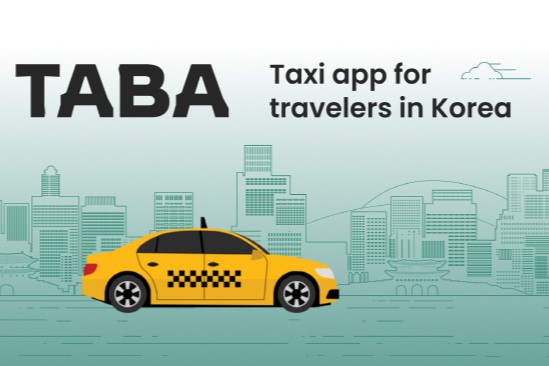Covered in this section:
- Welcome to Seoul
- Passport and Visa Requirements
- Travel Information
- Practical Information
- Currency and VAT Information
Seoul Welcomes You to the 2025 IPSA World Congress!
 Historical Legacy
Historical Legacy
Seoul is a fascinating and unique destination with a dual character of ancient traditions and ultra-modern technological lifestyles. The city offers a wealth of experiences, with each visit providing a unique perspective. Its rich history and modern dynamism create a vibrant and ever-changing landscape.
Seoul has been the capital and center of Korean culture and history for more than 600 years. The city's ancient heritage is evident in numerous sites, including the Five Royal Palaces and the Seoul City Walls. The careful preservation of these sites has earned them a place on the UNESCO World Heritage List. Seoul is a cultural trendsetter, influencing music, fashion and artistic creativity in Asia and beyond.
 Dynamic Cityscape
Dynamic Cityscape
Seoul is a constantly evolving city with a unique blend of traditional and modern elements. This is evident in the city's skyline, where you can find striking examples of modern architecture, such as the Dongdaemun Design Plaza, located next to the ancient Dongdaemun (East Gate) and just below the slope of scenic Naksan Park. Whether you visit a royal palace or the 123-story Lotte World Tower, one of the world's tallest buildings, you will have the opportunity to appreciate Seoul's distinctive character.
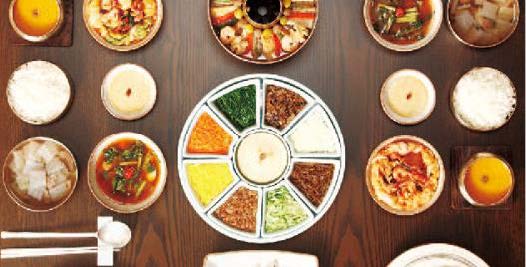 Explore the Korean Cuisine
Explore the Korean Cuisine
Visitors to Seoul often leave with glowing mentions of their Korean culinary experiences. In addition to common favorites such as kimchi, galbi (marinated ribs), and bibimbap (rice with sauteed vegetables and other toppings), there is a long list of restaurants specializing in the diverse cuisines of Korea's various regions. The city's diverse global cuisine scene is equally impressive, offering a range of authentic international flavors from Italian, Middle Eastern, and Indian cuisines, among others.
Five Must-see Sites in Seoul
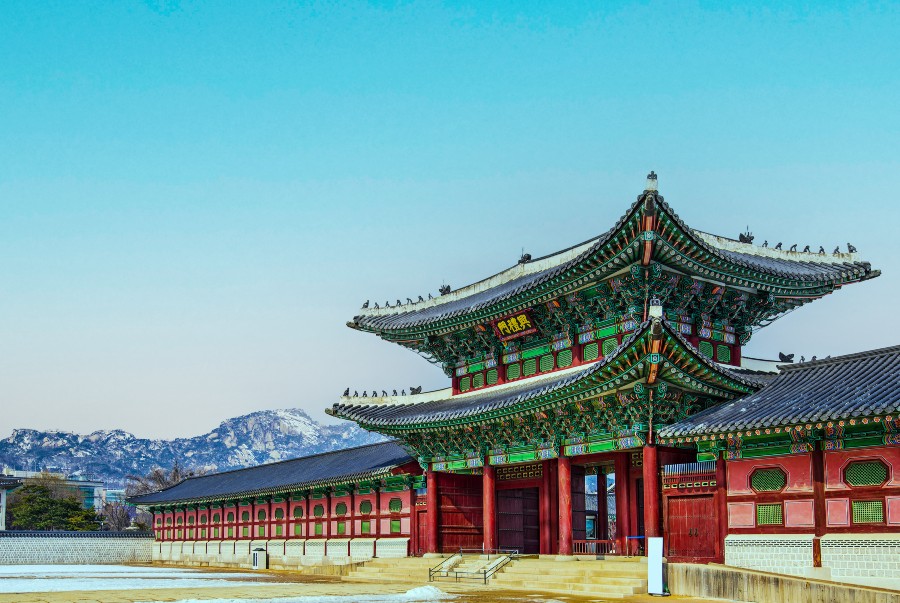 1. Gyeongbokgung Palace: Gyeongbokgung Palace was built as the official palace of the Joseon Dynasty by Yi Seong-gye, who became King Taejo and the founder of the new regime. Commonly referred to as the Northern Palace, Gyeongbokgung is arguably the most beautiful and largest of the five palaces.
1. Gyeongbokgung Palace: Gyeongbokgung Palace was built as the official palace of the Joseon Dynasty by Yi Seong-gye, who became King Taejo and the founder of the new regime. Commonly referred to as the Northern Palace, Gyeongbokgung is arguably the most beautiful and largest of the five palaces.
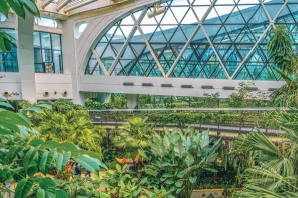 2. Seoul Botanic Park
2. Seoul Botanic Park
As the first botanical park in Korea that combines a park and a botanical garden, Seoul Botanic Park raises awareness about plant culture and biodiversity. In the middle of downtown Seoul, you can find a variety of plants and ecological spaces.
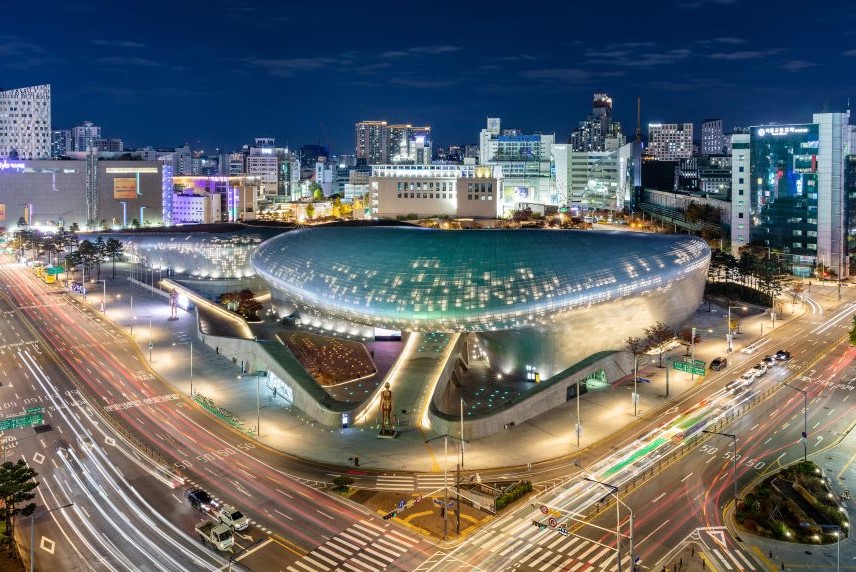 3. Dongdaemun Design Plaza
3. Dongdaemun Design Plaza
Dongdaemun Design Plaza is a cultural multiplex that hosts a variety of events, including exhibitions, performances, conventions, and fashion shows. Its unique architectural design, which incorporates an extra-large space, makes it a distinctive venue. The Plaza is conveniently located near numerous shopping malls and clothing markets, making it an ideal shopping destination.
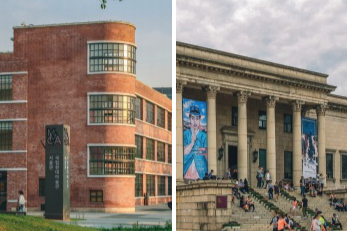 4. MMCA (National Museum of Modern and Contemporary Art) Seoul
4. MMCA (National Museum of Modern and Contemporary Art) Seoul
The MMCA is a cultural and arts multiplex where you can see the flow of contemporary Korean art at a glance. There are two venues in Seoul: MMCA Seoul and MMCA Deoksugung. Everyone can easily access modern art and enjoy the breadth of culture and art at MMCA.
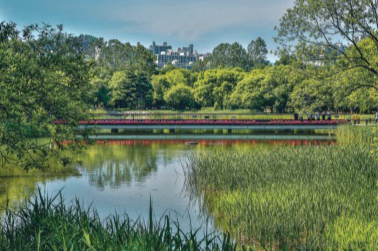 5. Seoul Forests
5. Seoul Forests
Seoul Forests is a forest created with four themes: Culture and Art Park, Wetland Eco Center, Eco Forest, and Experience Center.
Passport and Visa Requirements
Visitors entering the Republic of Korea (ROK) are required to hold a valid passport and visa. Nationals of visa waivers or visa-free countries may enter the country without a visa for tourism purposes only. For any other purposes, such as employment or education, proper visas are required. Nationals of non-visa waiver countries must apply for visas at the nearest Korean embassy or consulate before entering the ROK.
For more information, please visit the Korea Visa Portal and the Korea Electronic Travel Authorization (K-ETA) website.
Visa-free Countries
Nationals of the following countries are allowed to enter and stay in ROK for up to 30 days of visa-free sojourn for tourism or visitation purposes.
| Continent | Country / Region |
| Asia 8 countries | Japan, Hong Kong, Macao, Taiwan, Brunei (30), Singapore, Malaysia, Thailand |
| Americas 32 countries | United States, Canada (6 months), Guyana (30), Guatemala, Grenada, Nicaragua, Dominican Republic, Dominica, Mexico, Barbados, Bahamas, Venezuela, Brazil, Saint Lucia, Saint Vincent & the Grenadines, Saint Kitts & Nevis, Suriname, Argentina (30), Haiti, Antigua & Barbuda, Ecuador, El Salvador, Honduras (30), Uruguay, Jamaica, Chile, Costa Rica, Colombia, Trinidad & Tobago, Panama, Paraguay (30), Peru |
| Europe 43 countries | Andorra (30), Monaco (30), San Marino (30), Cyprus (30), Albania (30), Croatia, Slovenia, Vatican City (30), Bosnia-Herzegovina (30), Serbia, Montenegro (30), Greece, Netherlands, Norway (90 days within a 180-day period), Denmark (90 days within a 180-day period), Germany, Latvia, Russia (60 days / 90 days total within a 180-day period), Romania, Luxembourg, Lithuania, Lichtenstein, Malta, Belgium, Bulgaria, Sweden (90 days within a 180-day period), Switzerland, Spain, Slovakia, Iceland (90 days within a 181-day period), Ireland, Estonia (90 days within a 180-day period), United Kingdom, Austria, Italy, Czech Republic, Kazakhstan (30), Türkiye, Portugal (90 days within a 180-day period), Poland, France, Finland (90 days within a 180-day period), Hungary |
| Oceania 13 countries | Australia, Guam (30), Fiji (30), Nauru (30), Palau (30), Kiribati (30), Marshall Islands (30), Solomon Islands (30), Micronesia (30), Samoa (30), Tuvalu (30), Tonga (30), New Zealand |
| Africa & Middle East 16 countries | Republic of South Africa (30), Mauritius (30), Seychelles (30), Swaziland (30), Botswana, Morocco, Saudi Arabia (30), Arab Emirates, Oman (30), Qatar (30), Kuwait, Bahrain (30), Liberia*, Lesotho (60), Israel, Tunisia (30) |
*Visa-waiver agreement with Liberia has been temporarily suspended as of 18 July 2019. Source: Korea Tourism Organization
Travel Information
Traveling to Seoul
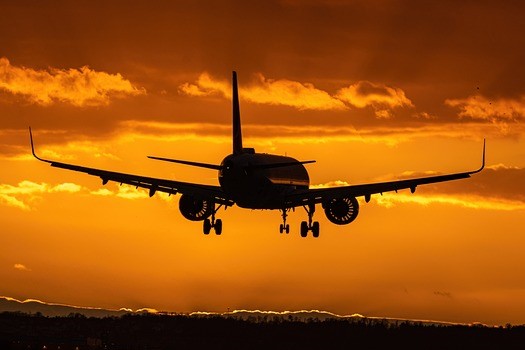 Incheon International Airport is the main port of arrival for most flights from outside Korea. 68 airlines from 50 countries and 128 cities fly to Seoul's Incheon International Airport (MAP). Located approximately one hour from downtown Seoul, there are a number of convenient ways (train, bus, taxi) to get to the city from the airport.
Incheon International Airport is the main port of arrival for most flights from outside Korea. 68 airlines from 50 countries and 128 cities fly to Seoul's Incheon International Airport (MAP). Located approximately one hour from downtown Seoul, there are a number of convenient ways (train, bus, taxi) to get to the city from the airport.
Domestic flights and some flights from neighbouring countries go to the Gimpo International Airport.
To help plan your visit to Seoul, visit https://english.visitseoul.net/getting-to-seoul.
Official Supporting Airline: Malaysia Airlines Offers Up to 15% Discount

Malaysia Airlines is the official supporting airline partner of the 2025 IPSA World Congress of Political Science. As part of this partnership, Malaysia Airlines is offering up to 15% off airfares for all registered IPSA World Congress participants and their companions. The discounted fares can be easily booked online via the Malaysia Airlines website or its mobile app.
Details of the Offer
- Valid Destination: Seoul, South Korea
- Offer Valid Until: 23 July 2025
- Promo Code: MHIPSA15
- Booking Platform: Malaysia Airlines website or mobile app only
Seoul Bleisure
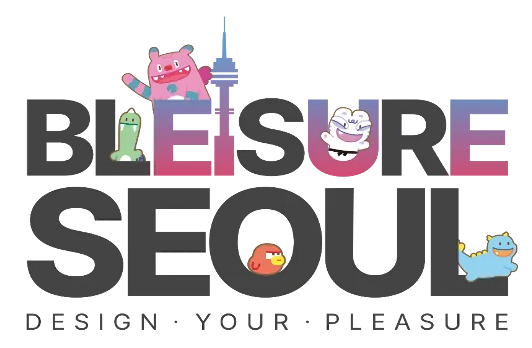 Explore Seoul like a local!
Explore Seoul like a local!
Visit Seoul BLeisure for tips on attractions, restaurants, unique leisure activities, and much more!
Visit Seoul.Net
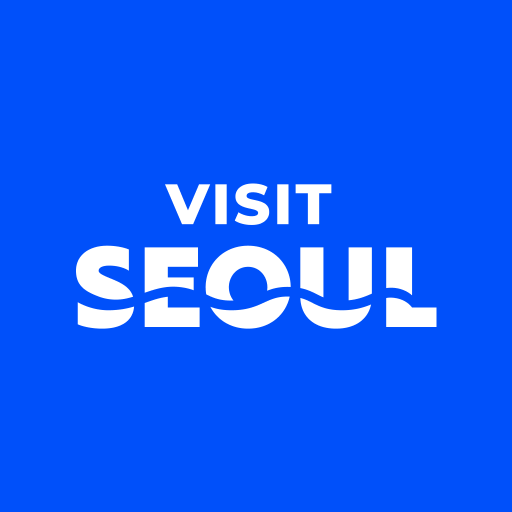 Explore Seoul like never before! Visit Seoul’s official travel guide at VisitSeoul.net to discover must-visit places, top attractions, cultural landmarks, and insider tips. From historic palaces and vibrant markets to detailed travel info and local events, everything you need to plan your trip is just a click away!
Explore Seoul like never before! Visit Seoul’s official travel guide at VisitSeoul.net to discover must-visit places, top attractions, cultural landmarks, and insider tips. From historic palaces and vibrant markets to detailed travel info and local events, everything you need to plan your trip is just a click away!
Getting Around Seoul
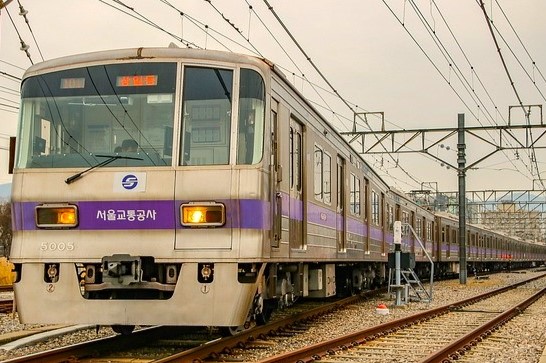 Seoul has an extensive network of public transportation and taxis. The Seoul subway system is one of the most efficient ways to travel around the city, with trains running non-stop from 5:30 am until midnight. All subway lines are colour-coded, and station display signs are in English. To ride the subway, you must use a single or multiple journey pass. Single-journey passes can be purchased at subway stations, and require the exact fare to your destination plus a 500-won refundable deposit. Multiple journey passes called T-money can be purchased at most convenience stores. Transfers between subway lines are free, and T-money users can transfer for free between bus and subway lines.
Seoul has an extensive network of public transportation and taxis. The Seoul subway system is one of the most efficient ways to travel around the city, with trains running non-stop from 5:30 am until midnight. All subway lines are colour-coded, and station display signs are in English. To ride the subway, you must use a single or multiple journey pass. Single-journey passes can be purchased at subway stations, and require the exact fare to your destination plus a 500-won refundable deposit. Multiple journey passes called T-money can be purchased at most convenience stores. Transfers between subway lines are free, and T-money users can transfer for free between bus and subway lines.
T-Money Mpass Card
T-money Mpass is a periodic public transportation ticket designed to facilitate travel around Korea for foreign visitors. With Mpass, ticket holders may use Seoul subway lines 1-9, Incheon subway line 1, and the airport railroad up 20 times a day.
For information, visit the Transportation page of VisitSeoul.net.
You can navigate Seoul with TABA, a taxi app in Korea that seamlessly connects you with local taxi drivers, ensuring low fares and a safe, hassle-free taxi experience. TABA has officially partnered with the Seoul Metropolitan Government and T-Money.
Key Features:
- Multilingual Support: No need to type in Korean. The app allows address searches in all languages;
- Retain Your Number: Register with your mobile number without complicated authentication process;
- Explore Seoul’s Destinations: Discover popular attractions and easily hail a taxi to get there.
Uber is also available in Seoul.
Practical Information about Seoul
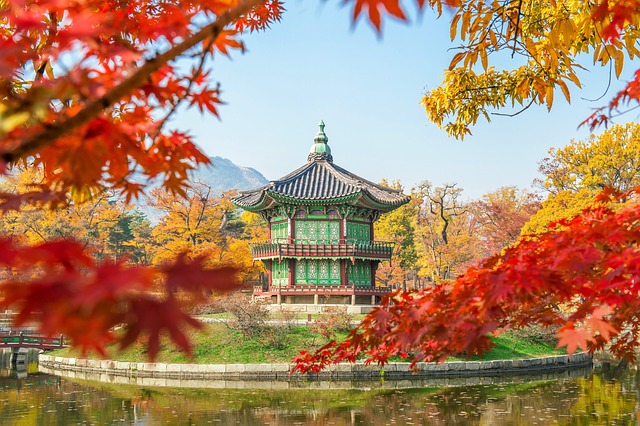 Weather: Korean summers are characterized by high temperatures and humidity, with July temperatures in Seoul averaging between 22 and 28 degrees Celsius (71.6 to 82.4 Fahrenheit). The rainy season starts in mid-June and lasts about a month. While monsoon rains are common, precipitation is relatively low compared to other regions, with July seeing the highest monthly rainfall at 383 millimeters. The abundance of moisture in the Seoul area results in particularly lush and verdant foliage in the city’s parks and mountains. We recommend bringing breathable clothing to stay cool in the heat. Additionally, packing a rain jacket or umbrella is advisable, as rain may occur during your stay.
Weather: Korean summers are characterized by high temperatures and humidity, with July temperatures in Seoul averaging between 22 and 28 degrees Celsius (71.6 to 82.4 Fahrenheit). The rainy season starts in mid-June and lasts about a month. While monsoon rains are common, precipitation is relatively low compared to other regions, with July seeing the highest monthly rainfall at 383 millimeters. The abundance of moisture in the Seoul area results in particularly lush and verdant foliage in the city’s parks and mountains. We recommend bringing breathable clothing to stay cool in the heat. Additionally, packing a rain jacket or umbrella is advisable, as rain may occur during your stay.
 Safety: Seoul has earned a reputation as a city with high safety, security and hygiene. Seoul operates the Seoul Global Center to provide various services for visitors, a medical referral service for foreigners, and a call center that provides services in multiple languages to minimize inconvenience for foreigners. Most services and facilities are available 24 hours a day.
Safety: Seoul has earned a reputation as a city with high safety, security and hygiene. Seoul operates the Seoul Global Center to provide various services for visitors, a medical referral service for foreigners, and a call center that provides services in multiple languages to minimize inconvenience for foreigners. Most services and facilities are available 24 hours a day.
Liability and Insurance
The IPSA Secretariat and local organizers cannot accept liability for personal accidents or loss of or damage to private property of participants. Participants are advised to take out their own personal travel and health insurance for their trip.
Currency and VAT Information
Currency Exchange
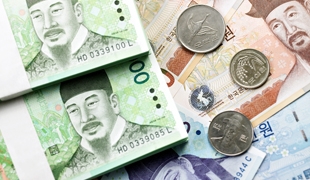 The currency of Korea is the Won (₩; KRW). You can easily exchange foreign currencies into Korean Won at bank exchange offices at the airport, banks in downtown Seoul, and private currency exchange offices. Most private bureaux de change are open from 6 a.m. to 9 p.m. However, you need to check as the hours may vary from branch to branch. Bank exchange offices at the airport have varying hours of operation, and some are open 24 hours a day. Check the airport website for locations of exchange offices.
The currency of Korea is the Won (₩; KRW). You can easily exchange foreign currencies into Korean Won at bank exchange offices at the airport, banks in downtown Seoul, and private currency exchange offices. Most private bureaux de change are open from 6 a.m. to 9 p.m. However, you need to check as the hours may vary from branch to branch. Bank exchange offices at the airport have varying hours of operation, and some are open 24 hours a day. Check the airport website for locations of exchange offices.
Korean monetary unit
Bills: Four types of bills, including ₩1,000, ₩5,000, ₩10,000, and ₩50,000.
Coins: Four types of coins, including ₩10, ₩50, ₩100, and ₩500.
Payment methods available in Korea
Credit card: Credit cards are accepted at most stores, restaurants, hotels and tourist attractions throughout the country. You can pay by credit card for any amount, small or large. Businesses accept a variety of credit cards, including Visa, Mastercard and American Express.
Traveler's checks: Traveler's checks can be exchanged for cash at banks and bureaux de change. Traveler's checks can be used as an alternative to cash, but checks are rarely used in Korea.
Note: You will be required to present a passport or resident card when exchanging currency. You can exchange up to $10,000 at a time. A customs declaration is required to exchange currency in excess of this amount.
Value-Added Tax (VAT) Reimbursement
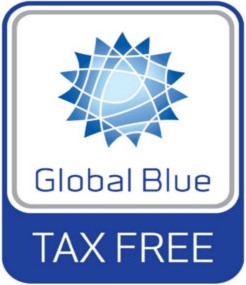 In Korea, a 10 percent value-added tax (VAT) is added to the price of many purchases. At stores displaying a “Tax Free” sign, foreign visitors are eligible for a tax refund on purchases greater than 30,000 won. To receive your refund, please follow the steps below:
In Korea, a 10 percent value-added tax (VAT) is added to the price of many purchases. At stores displaying a “Tax Free” sign, foreign visitors are eligible for a tax refund on purchases greater than 30,000 won. To receive your refund, please follow the steps below:
- Purchase merchandise of total value greater than 30,000 won at stores displaying the “Tax Free” sign;
- Show your passport and ask for a refund check when paying;
- Present your passport, refund check, receipt, and unopened merchandise at airport customs when leaving the country;
- Receive your cash, check, or credit card refund at the refund counter located near the departure gates.
